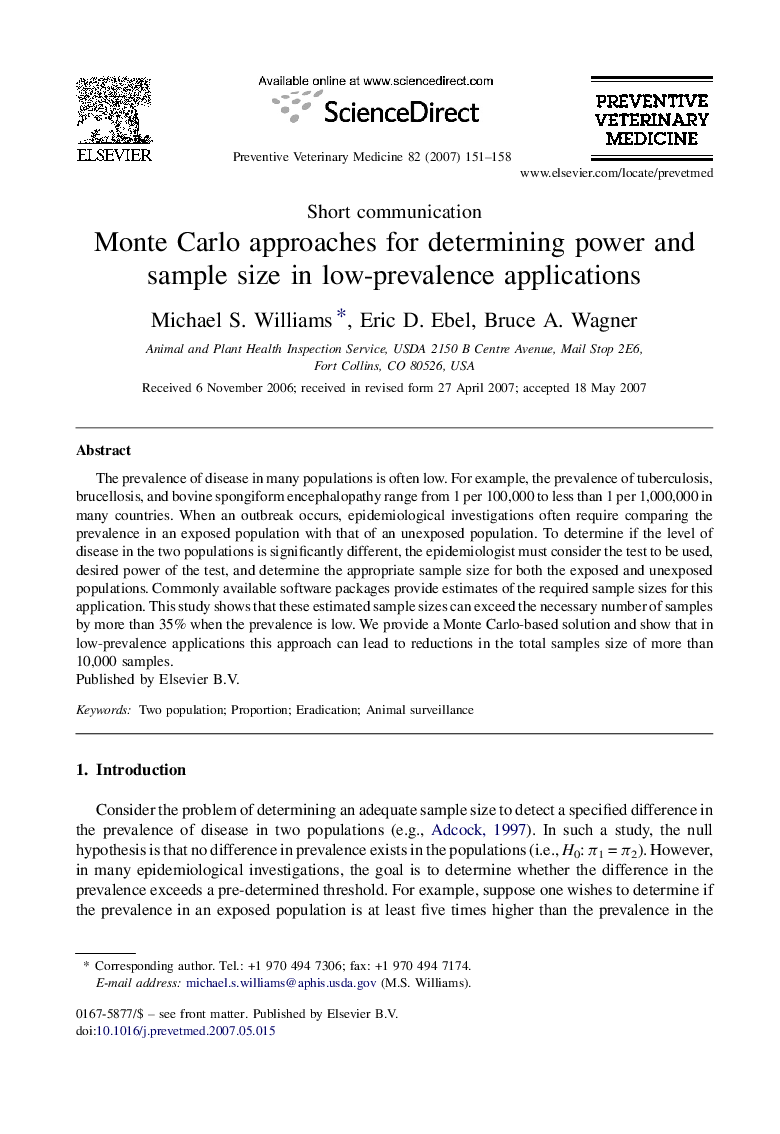| Article ID | Journal | Published Year | Pages | File Type |
|---|---|---|---|---|
| 2453311 | Preventive Veterinary Medicine | 2007 | 8 Pages |
The prevalence of disease in many populations is often low. For example, the prevalence of tuberculosis, brucellosis, and bovine spongiform encephalopathy range from 1 per 100,000 to less than 1 per 1,000,000 in many countries. When an outbreak occurs, epidemiological investigations often require comparing the prevalence in an exposed population with that of an unexposed population. To determine if the level of disease in the two populations is significantly different, the epidemiologist must consider the test to be used, desired power of the test, and determine the appropriate sample size for both the exposed and unexposed populations. Commonly available software packages provide estimates of the required sample sizes for this application. This study shows that these estimated sample sizes can exceed the necessary number of samples by more than 35% when the prevalence is low. We provide a Monte Carlo-based solution and show that in low-prevalence applications this approach can lead to reductions in the total samples size of more than 10,000 samples.
